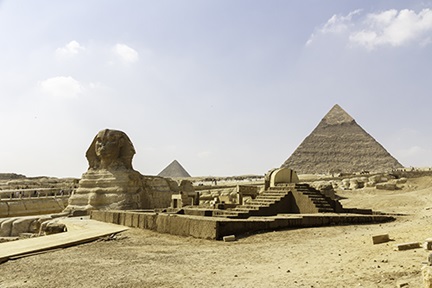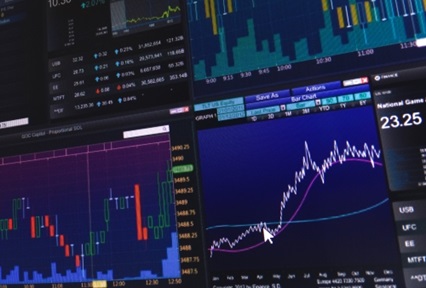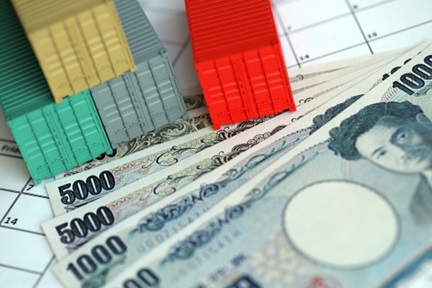Africa and the push towards de-dollarisation
Is it needless or necessary?
By Ronak Gopaldas

As countries calibrate their response to the geopolitical uncertainty roused by Donald Trump a key theme has resurfaced – dedollarisation. Fearing further weaponisation of the dollar, haphazard ‘Trumponomics’ and a corrosion of the US dollar’s stability and reliability, arguments for reducing exposure to the greenback have gained momentum. However, the relative stability of the US dollar, the formidable size of the US economy, the well-established entrenchment of the dollar in the global trading system, and fear of potential backlash from the US administration has thus far kept the dollar as the preferred reserve currency of the world.
In Africa the conundrum of dedollarisation is particularly consequential. Policymakers have long bemoaned the loss of economic control to the dollar, through organic dollarisation, policy redundancy, and even the threat of sanctions. Consequently, African states have been strong advocates for domestic and regional dedollarisation, with bodies like BRICS adding momentum to these discussions.
That said bypassing the dollar carries substantial risk. It has often served as a hedge for monetary instability in fragile African economies and the continent is still highly dependent on dollar denominated aid, trade and debt. This often gives pause to any serious attempts to ditch the dollar. Until now. Accordingly, this piece will discuss the underpinnings of dollar hegemony and the possibility of its corrosion due to uncertainty under the Donald Trump regime. It will provide a historical account of dollar hegemony and dedollarisation; highlighting the arguments for why African states should or should not ditch the greenback.
The underpinnings of dollar hegemony
Dollar hegemony has been the defining feature of the global international financial order since the establishment of the Bretton Woods system. Even after the Nixon Shock of 1971, and the suspension of dollar-gold convertibility, the greenback continued to dominate global trade, finance and reserves. Even at the height of the cold war 60-70% of international trade transactions was conducted in US dollars. This dominance was largely due to the strength of the US economy and its stability. The world tacitly adopted the US dollar as the de-facto global reserve currency because of its fungibility, stability and worldwide acceptance. Using the US dollar made international trade easier and protected the value of wealth, especially in times of crisis. The result is that 60% of foreign exchange reserves and 80% of international trade is transacted in dollars in the world are currently held in US dollars.[1] More than 70% of African external debt is denominated in dollars.[2]
There was also strategic incentive for the US to maintain dollar dominance. Having its currency at the heart of global commerce granted Washington unparalleled geopolitical leverage. It could exert pressure on rivals without military force. The US was equally intent on maintaining what former French prime minister Valery Giscard d’Estaing dubbed “exorbitant privilege.” Due to dollar hegemony the country could live beyond its proverbial means with little consequence. It could borrow at a discount, run twin deficits, and engage monetary financing.[3] In other words, the United States is arguably the only country in the world that can afford to run excessive deficits without worrying about how to finance it. It can simply borrow from the international market and repay what it owes in its own currency.
Whilst there has been an undercurrent of unease over dollar hegemony since the end of the second world war the most concrete step towards dedollarisation came in form the Euro in 1999. European politicians like former German chancellor, Helmut Kohl, French president, Francois Mitterrand, and European commissioner, Romano Prodi, argued that the establishment of a monetary union was a necessary mechanism to reduce reliance on the dollar, safeguard European autonomy and bolster geopolitical influence.[4]
At its outset there was optimism that the Euro could rival, if not displace the dollar, given the major economies encompassed in the zone and the growing share of aid, trade and debt for which they accounted. By 2006, the Euro had grown to account for 20% of global foreign reserves and 31% of foreign exchange transactions displacing the pound as the leading alternative to the dollar.[5]
However, its ascent was curtailed by a series of structural challenges. These include political fragmentation, and the sheer depth and size of the US financial market. Consequently, the Euro’s share of total US$12.5 trillion global currency reserves has remained stuck at around 20%. 
Dollarisation of Africa
Historically, Africa’s relationship with the dollar and foreign currencies has been driven by economic necessity rather than choice.
Several newly independent African states were incentivised to maintain their ‘colonial’ currencies and later, peg post-colonial regimes for purposes of economic continuity and stability. A case in point is the CFA franc in Central and West African Francophone regions. After gaining independence from France in the 1960’s, 12 former colonies retained use of the Franc. This was criticised by pan-African thinkers as paternalistic and a sacrifice of economic sovereignty. However, political leaders like Senegal’s Leopold Sedar Segnhor and Cote d’Ivoire’s Felix Houphouet Boigny maintained that it was necessary for price stability, trade and convertibility during a time of political flux.[6] France’s adoption of the Euro in 1999 the CFA Franc was pegged to the new currency. To maintain France’s guarantee of the peg, CFA members would continue to deposit a portion of reserves with the treasury; an arrangement that would later give rise to the anti-French fervour that has swept across the region.
This differs from the experience of former communist countries like Angola, Mozambique and Ethiopia which avoided dollarisation or the adoption of other Western countries as a result of beneficial arrangements with the Soviet Union. Transactions were often conducted in Soviet Rubles or bilateral clearing agreements including bartering, largely bypassing dollarized engagements.[7] However, they were absorbed into the dollar system once the Soviet Union collapsed.
Multilateral agreements first entrenched the use of the dollar on the continent during the 1980’s and 1990’s. African countries facing debt crises, spiralling inflation, and currency vulnerability, turned to structural adjustment programs (SAPs) by the IMF and World Bank. Although these programs opened African economies to global trade and finance, one of the contentious consequences was the proliferation and consolidation of the dollar.
In countries like Zimbabwe, Mozambique, and Angola, the acute instability of local currencies prompted spontaneous dollarisation. Households, business and state institutions automatically resorted to the more stable greenback for pricing, saving, and transactions.
Zimbabwe presents Africa’s most extreme case of dollarisation. In the wake of hyperinflation in the early 2000’s, the government abandoned the Zimbabwean dollar in 2009. In turn, it legalised the use of foreign currencies – primarily the dollar - for domestic transactions. While this bred temporary stability, it also diluted Reserve Bank of Zimbabwe’s monetary sovereignty. Since then, Zimbabwe has made several attempts to dedollarise, introducing a series of currencies. These include the RTGS (Real-Time Gross Settlement) dollar, the Zimbabwean dollar, bond and most recently the Zimbabwean Gold. However, lack of public trust, persistent inflation, and limited foreign reserves have continuously undermined confidence in local currencies, pushing households and businesses back to the dollar. As of 2024, over 70% of transactions in Zimbabwe were still conducted in USD according to government data.[8]
Drivers of the shift towards dedollarisation
Security calculation have also prompted some governments on the continent to renege on the dollar. Countries such as Sudan and Libya have pivoted away from the greenback as a shield against sanction. Specifically, restrictions to platforms such as SWIFT, asset freezes and limits to transactions have made policymakers – especially those with frictions with the west - increasingly circumspect toward dollar usage. In Sudan successive military regimes have circumnavigated the dollar through transactions in gold. Meanwhile, Libya post Muammar Gaddafi has relied on a combination of resource-based barters and a mix of regional and international currencies.
Analogous currency reforms have also occurred in other parts of the continent. In West and Central Africa, the Franc has been a point of contention, with citizens and governments demanding its repeal. Political and economic arguments have been used to substantiate such demands. Leaders such as Burkina Faso’s Ibrahim Traore, Niger’s Abdourahamane Tiani and Senegal’s Bassirou Diomaye Faye, see the Franc is a colonial relic and have taken steps to cut their links with it.[9] Economists such as Souleymane Gueye have also weighed in suggesting that the regime is an impediment to the region’s economic aspirations. They argue that the CFA is overvalued to the detriment of export competitiveness, inbound investment and sectoral development. This in turn has stunted the growth of countries under the regime. It has also exposed countries to contagion from the Eurozone, whilst fundamentally working against the structural transformation or regional integration of economies under the regime.[10] Though not a direct case of dedollarisation, grievances with the CFA franc reflect similar frustrations within the Francophonie: lack of monetary sovereignty, vulnerability to external policy decisions, and limited regional autonomy. This has given momentum to attempts at monetary regionalisation such as the establishment of the ECO and initiatives by the Alliance of Sahelian States to launch a common currency.
There has also been institutional push to wean from dollar dependence. The African Union, Afreximbank, and African Continental Free Trade Agreement have aligned to address Africa’s overdependence on the dollar through structural reforms. Chief among these is the Pan-African Payment and Settlement System (PAPSS). Launched in 2022 to function alongside the AfCFTA, PAPSS already has buy in from 15 central banks and 150 commercial banks across the continent.
Through its African currency marketplace – set to launch this year – it will African stakeholders to transact in their respective local currencies, eliminating the need for dollar clearing via external correspondent banks.[11] By way of example, PAPSS CEO, Mike Ogbalu, claims that Ethiopian Airlines could sell naira-denominated tickets in Nigeria, which could then exchange its naira revenue with a Nigerian company operating in Ethiopia using the birr without making dollar conversions. Bypassing the typical dollar conversion simplifies trade, reduces transaction costs, and strengthens currency sovereignty. It also circumnavigates dollar liquidity challenges faced by myriad African governments and businesses.[12] Moreover, it represents a trial for whether or not large scale trade can be facilitated within the continent outside of a dollar framework.
Peers in the global South — particularly the BRICS bloc — have emerged as the most vocal and active advocates for dedollarization. To be sure, the BRICS as a bloc does not explicitly advocate for dedollarization. However, its principles and practices suggest as much, albeit in a pragmatic, evolutionary and stealthy manner. BRICS has tended towards dedollarisation through three channels - promotion of local currencies, the development of alternative financial institutions and the establishment of independent payment systems – all as part of its bid to rebalance the global economy and establish multi-polarity.[13] To this end, it has established institutions like the New Development Bank and Contingent Reserve Arrangement (CRA), along platforms like BRICS pay. Although not explicitly described as such, the NBD and CRA are intended – to some extent – to serve as alternatives to the IMF and World Bank. BRICS pay meanwhile, has been established to bypass dollar-based settlement platforms like SWFT and CHIPS.
China has taken the lead in proliferating non-dollar-based commerce in Africa, with the yuan become a growing mainstay in credit and trade. Since 2010, Beijing has expanded the yuan’s role as a general exchange facilitator by signing over 40 currency swap agreements globally, including with at least four African countries: South Africa, Nigeria, Egypt, and Morocco.[14] China’s emergence as Africa’s leading trade partner has also expedited the substitution of the yuan for the dollar. This is crucial given the historical precedent and the manner in which trade patterns determine currency dependency. Following the second world war, the US dollar displaced the pound sterling as the global currency of choice in large part due to trade. With China emerging as the largest trading partner with the rest of the world there is a legitimate possibility that it could displace the dollar.
In Africa this possibility is particularly distinct. Trade between the Asian hegemon and Africa grew from less than US$50bn in 2005 to more than US$250bn in 2023 According to the China Africa Research Initiative.[15] Data on African settlements in yuan is limited; however, newspaper sources suggested that it was in excess of US$11.45bn.[16] To facilitate growing trade with China, African countries including South Africa, Zambia and Mauritius have created RMB clearing banks and alternative settlement systems. In addition to strengthening yuan’s posture as the dollar’s foremost challenger, China’s initiatives have added to the global south’s infrastructure to conduct transactions outside of the dollar framework and infrastructure.
Particularly unique mechanisms to circumnavigate the dollar have come from Iran. After being cut off from SWIFT in 2012 and again in 2018, Tehran turned to non-dollar trade channels to sustain its economy. It revised and expanded barter trade, exchanging oil for goods and services with countries like China, India, Pakistan, and Venezuela. It has also settled transactions in alternative currencies like the yuan and the lira, and conducted gold-backed oil sales with countries such as Turkey.[17]
Difficulties of dedollarisation
Despite having some strategic merit, efforts towards dedollarisation are beset with deep structural and political obstacles. These limit the near-term feasibility of dedollarisation, especially when done collectively at scale.
Most immediate among these is infrastructural inadequacy. While the Pan-African Payment and Settlement System (PAPSS) represents towards such infrastructure, it is still operable in only a handful of African monetary zones. Most central banks and commercial banks lack the digital architecture and liquidity mechanisms required for seamless regional clearing in local currencies. By way of example, the African Development Bank noted in 2023 that less than 10% of intra-African payment settlements occur through regional platforms.[18] Growing this number will require a level of investment in financial infrastructure that many African countries cannot fulfil in the short term.
A second major constraint is Africa’s external debt composition. According to the World Bank, over 60 of the continent’s external public debt is dollar-denominated. Even if trade is settled in alternative currencies, long-term dollar-denominated liabilities lock African economies into the orbit of the greenback. In addition, Local currencies also lack credibility due to domestic structural flaws. Countries like Zimbabwe, South Sudan, and even larger economies like Nigeria continue to battle chronic inflation, parallel exchange rates, and weak institutional trust in central banking. In countries with histories of currency instability, individuals and businesses preferred to save and transact in dollars or hard assets. Without credible reforms to monetary governance and inflation control, dedollarisation efforts will lack popular legitimacy and economic traction.
Africa’s export profile also hinders dedollarisation. Approximately 60% of African exports are commodities, of which are globally priced and settled in US dollars.[19] Unless global commodity markets shift toward multi-currency pricing (as China has encouraged in some oil contracts), it will be difficult to settle major trade flows in local or regional currencies without facing price discrimination or hedging complications. Additionally, coordination capacity remains weak. The success of dedollarization hinges on aligned policy from finance ministries, central banks, and private financial institutions across the continent. Given persistent governance fragmentation, diverging national interests, and overlapping monetary zones, the harmonisation required for systemic dedollarisation is complex.
Lastly, geopolitical factors are also a disincentive. Donald Trump has threatened BRICS with tariffs if they take steps to ditch the greenback. While such threats may have deterred some members like India it may encourage others like China and South Africa to accelerate dedollarisation.
Why dedollarise?
There are several reasons why Africa should consider dedollarisation.
First, economic sovereignty. Due to their dependence on external financing, African states are disproportionately exposed to the externalities of US monetary policy. These are most often negative and force African countries to make unintended adjustments to policy. When the US Federal Reserve raises interest rates, capital flight from African markets often intensifies and sovereign borrowing becomes more expensive. This has had several casualties. In 2022, Ghana and Egypt saw their bond yields and international debt surge following Fed hikes responding to the conflict in Ukraine. Not only did this contribute to acute debt distress but it also pushed both countries towards restructuring.[20] Due to systemic vulnerabilities, African central banks also face greater pressure to correspond with the Fed. At times this has meant forgoing monetary expansion in order to limit differentials and maintain currency stability.
A second rationale for dedollarisation is to limit risks associated with volatility in the foreign exchange market. Ghana’s experience is a cautionary case in point. The dollar’s sharp appreciation in 2022 led to a 55% depreciation of the cedi rendering it one of the worst-performing currencies globally. This triggered acute imported inflation, with fuel and essential commodity prices soaring. By December 2022, headline inflation had reached a two-decade high of 54%. Egypt experienced a similar shock. Between early 2022 and mid-2023, the Egyptian pound lost over 50% of its value, raising the cost of imported wheat, petroleum products, and machinery. As Egypt imports over 60% of its wheat, food price inflation was particularly pronounced, driving aggregate inflation to 35% - its highest level on record.[21]
Alleviating inefficiencies in intra-continental trade is a third reason for shifting away from the dollar. Despite the establishment of the AfCFTA, over 70% of trade on the continent is still invoiced in dollars. Not only does this inflate transaction costs but also creates structural disincentives for regional integration. According to the UN Africa loses at least US$5bn annually in foreign exchange transaction costs.[22] This represents significant economic value forgone without little return whilst disincentivising peer to peer engagements and the benefits thereof. Due to the fact that such costs are often passed to the consumer, they undermine the competitiveness of locally produced goods and gains from trade.
Finally, the global context adds some impetus for dedollarisation. Donald Trump’s return to the US presidency and his haphazard policymaking has undermined trust in the dollar and the US-led order. Tariffs have alienated allies, policy uncertainty has destabilised markets and a rise in nationalism has exacerbated fears that the US may walk back the political, economic and security guarantees that underpin the dollar-based system. Furthermore, threats to fire Federal Reserve Chairman, Jerome Powell, have given rise to fears of executive encroachment in the monetary authority and broader corrosion of institutional autonomy and checks and balances that is intrinsic to the stability and trust in the dollar-based system.[23] Such maneuvering has destabilising markets and weakened confidence in the dollar. As evidence, the US dollar index has declined 8% year to date, reaching the lowest value in three years.[24] For Africa, this presents a rationale to hedge against dollar-borne risk by diversifying trade and debt and adopting alternative financial frameworks.
Conclusion
There are upsides and downsides to dedollarisation in Africa. The continent’s exposure to dollar cycles, subordination of monetary policy, weaponisation of the dollar by the Trump administration and an uncertain political outlook provide compelling reasons for why the continent should pivot away from the greenback. That said, there are acute constraints, with structural shortcomings and deep dependencies being the most pressing limiting factors. Nevertheless, dedollarisation does not have to be a binary process. As evidenced by the initiatives being led by the likes of China, India, Brazil and others within the continent, dedollarisation is necessarily ongoing adjacent to the current dollarized system. However, rather than it being an outright and swift abandonment of the dollar, it will continue stealthy evolutionary process evolving through initiatives like PAPSS.
References


.tmb-listing.jpg?Culture=en&sfvrsn=8636ce67_1)





